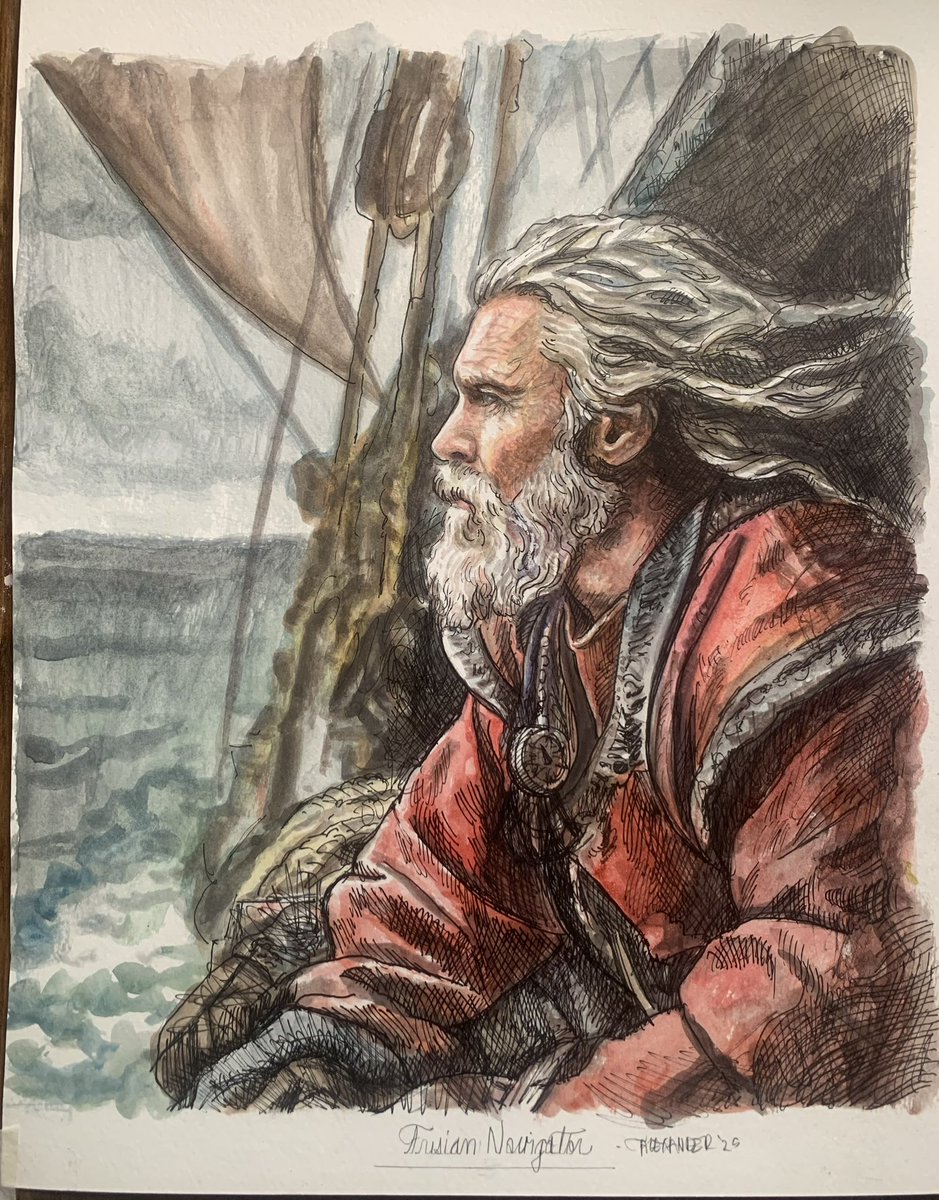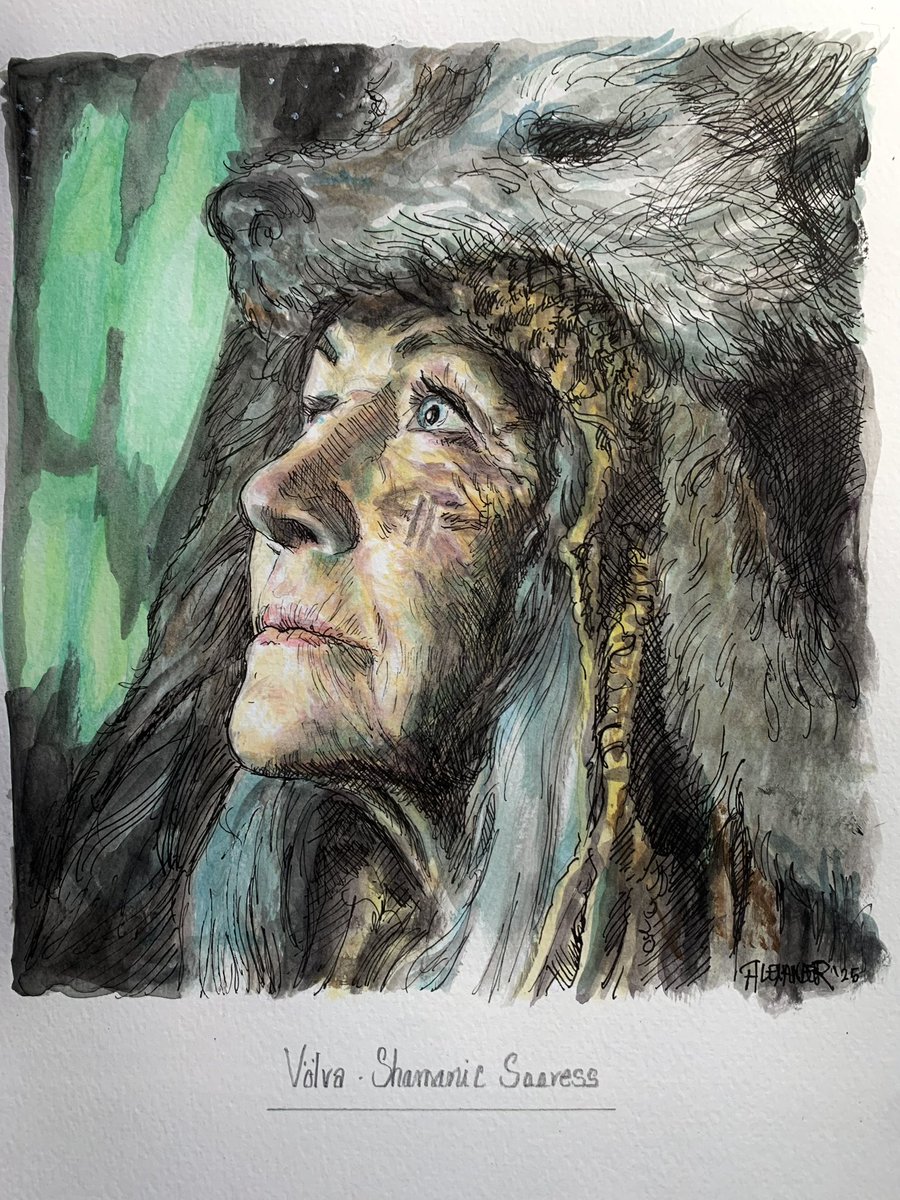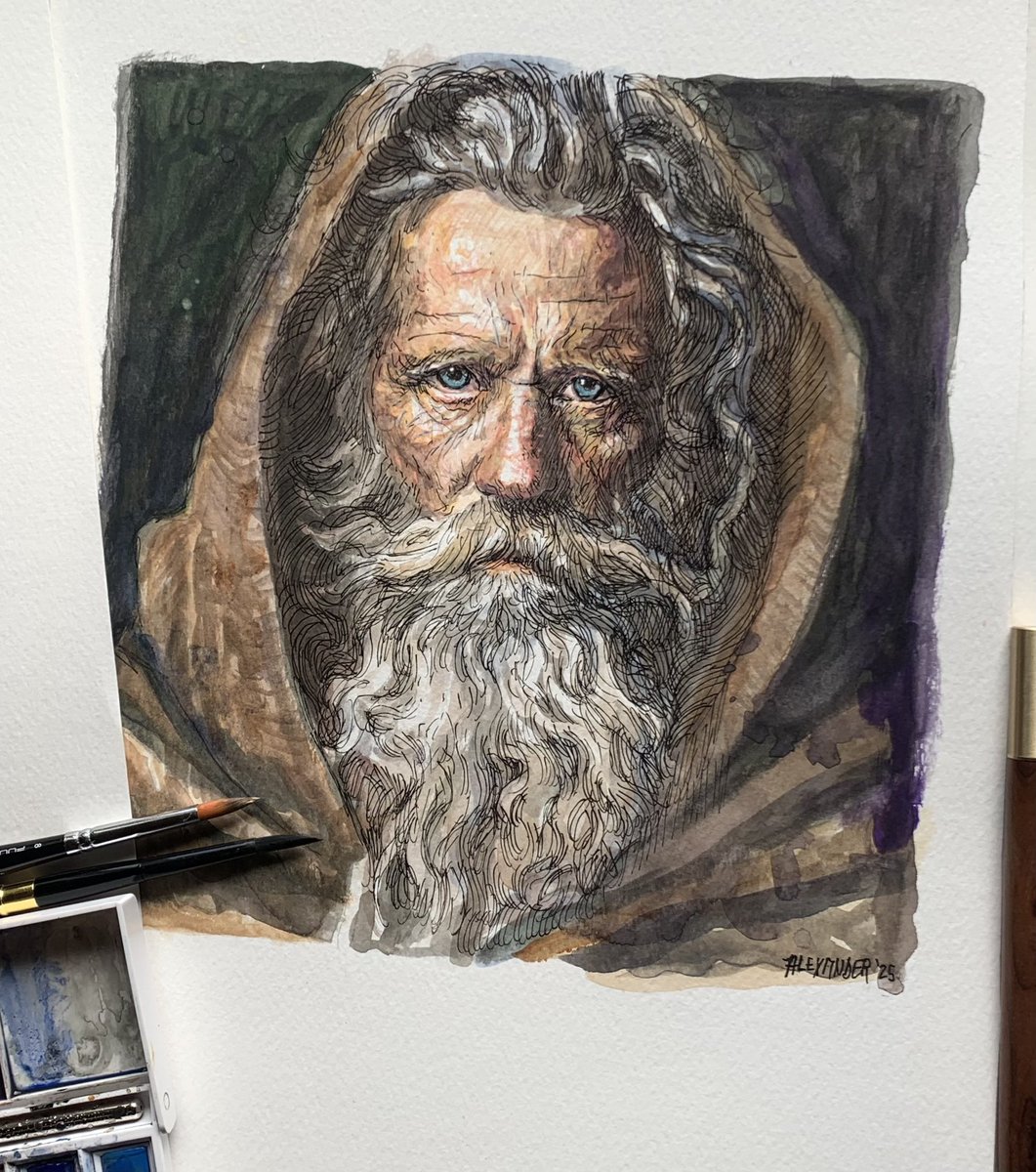
Colin Alexander
@colin_alex35207
Painter, Researcher, lover of old Maps and Mysteries
I want to illustrate the histories they don’t teach. Here is today’s drawing fresh from my imagination.

A cast of characters is developing, from my experiments in Watercolor. What a gratifying medium, compared to the tedium and heaviness of oil painting.

Work in progress: Frisian Archer versus Roman Centurion

Some of he best arguments for Oera Linda’s genius and/or authenticity are word-studies with its ‘Fryas’ language. Latin translated (back) into Fryas and then into later northern European languages. #oera_linda #fryas
A study I made in watercolor, from Giovanni Domenico Tiepolo’s- The Procession of the Trojan Horse into Troy 1760

A Völva (also spelled vǫlva) was a female shaman or seeress, known for her ability to foresee the future and practice magic, particularly Seiðr. They were highly respected figures in Norse society, often sought out for guidance during times of crisis. The word "völva" itself…

Portrait study in B&W. Getting back to basics with pen and brush.

Far-seeing Freya in the midst of a storm. In the distance she discerns the future, and the turning of the great Wheel. Stay hopeful & vigilant.

The Oracle and the Priest. Watercolor sketch from the movie in my mind. You won’t find it on Netflix;)

Dim the lights, let a draft in through the kitchen window, slowly kindle a fire in the fireplace, turn back your chair against the world and feel the hairs on the back of your neck begin to rise. M.R. James’s seminal eight original Ghost Stories of an Antiquary are finally…
“When twelve years had passed since we had last seen any Greeks at Almanland, three ships arrived, more elegant than any that we ourselves had — or had ever seen before. Upon the largest thereof was a king of Jon’s Islands. His name was Ulysus, and his wisdom was of great renown.…

An oil painting I did a few years ago, where I painted my modern version of “the Archaic Smile”, found so often in classical and renaissance art. The demure expression, 3/4 profile and the use of sfumato, were to echo Leonardo da Vinci’s drawing ‘Study of a woman.’


